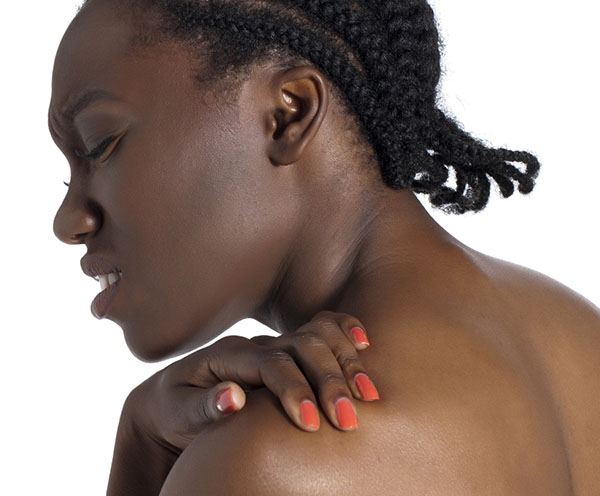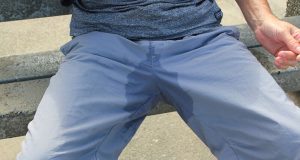By Dr. Virginia Nsitem
Pride Health Columnist
Do you experience pain when reaching overhead to grab something off a shelf or when holding your arms up to groom your hair? Do you find it painful to hold your arms up to groom your hair or reach behind your back to dress? Is it painful to carry a heavy object with your arms? If you answered yes, you may be suffering from an injury to your shoulder.
Anatomy of the shoulder
The shoulder is the most mobile joint in the body. In order to maintain this range of motion, the joint gives up some stability. The two main bones of the shoulder are the humerus (arm bone) and the scapula (shoulder blade). The arm bone sits nicely in a cup-like cavity of the shoulder blade. The cartilage of the shoulder joint surrounds this cup-like cavity. The clavicle (collar bone) is also an important bone in the shoulder joint. The important muscles include the deltoid muscle, the biceps muscle, and the four rotator cuff muscles. Together, the bones, cartilage, ligaments, and muscles work together to help you raise, bend, lift, reach, and throw with your shoulder. All of these components of your shoulder, along with the muscles of your upper body, work together to manage the stress your shoulder receives as you extend, flex, lift and throw.
What is rotator cuff tendonitis?
The rotator cuff is a group of tendons that hold the shoulder joint in place. Injury to these muscles and tendons is fairly common. The rotator cuff muscles work to lift the arm and reach overhead. The tendons of the rotator cuff can become injured from overuse, trauma, or degeneration/wear and tear. When the rotator cuff tendons are injured, also called a tendon strain, there is inflammation.
Symptoms of tendonitis at the shoulder
Common symptoms of tendonitis at the shoulder include:
- Pain and aching around the shoulder
- Pain with shoulder movements, especially reaching up or lifting
- Limited movements such as reaching behind or across the body
- Pain when lying on the affected shoulder
- Weakness
What can be done?
The first step is to get a proper diagnosis by your chiropractor or physician. If the injury to the tendons is severe, you may be referred to an orthopaedic specialist for special testing to determine the extent of damage to the shoulder tendons. Conservative treatments for tendonitis may include ice, stretching and strengthening exercises, chiropractic techniques to improve movement of the joint, soft tissue techniques to relax the muscles, and the use of modalities such as Laser therapy to help with decreasing the inflammation.
Dr. Virginia Nsitem is a chiropractor specializing in laser therapy for muscle, joint and nerve injuries, and is a Fellow of the Royal College of Chiropractic Sports Sciences in Canada. She may be reached at (905) 275-4993, or by email at totalhealth@bellnet.ca.
 Pride News Canada's Leader In African Canadian & Caribbean News, Views & Lifestyle
Pride News Canada's Leader In African Canadian & Caribbean News, Views & Lifestyle





